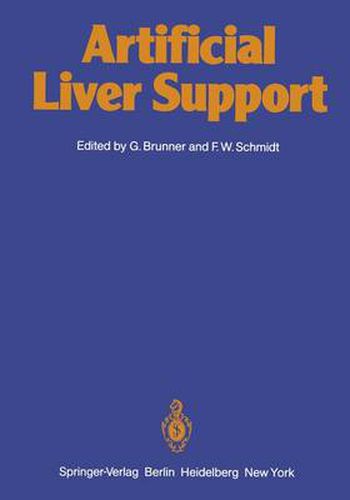Readings Newsletter
Become a Readings Member to make your shopping experience even easier.
Sign in or sign up for free!
You’re not far away from qualifying for FREE standard shipping within Australia
You’ve qualified for FREE standard shipping within Australia
The cart is loading…






This title is printed to order. This book may have been self-published. If so, we cannot guarantee the quality of the content. In the main most books will have gone through the editing process however some may not. We therefore suggest that you be aware of this before ordering this book. If in doubt check either the author or publisher’s details as we are unable to accept any returns unless they are faulty. Please contact us if you have any questions.
The regenerative capacity of the liver cell is almost unlimited. Therefore after acute liver damage, be it viral, toxic, hypoxic, or surgical in origin, restitutio ad integrum is the usual outcome. In two forms of liver disease, however, this is not the case: in fulmi nant hepatic failure, liver regeneration often is not fast enough to keep the organism alive; in end-stage cirrhosis, regeneration is dis turbed by a hypertrophic architecture of fibrotic tissue. For these extreme forms of liver disease and for critical situations before and after liver surgery, artificial liver support is needed. This book contains the latest results in this area of research pre sented by scientists from allover the world at an international symposium held in Celle, Germany, June 2-4, 1980. Exciting new methods like continuous membrane plasma sepa ration and liver cell transplantation into the spleen have been de veloped. The older methods of hemoperfusion and dialysis have been improved. Enzymological methods and liver transplantation have made good progress. We hope that this volume will help the clinician in his decision-making and stimulate ingenious new re search for the benefit of our liver patients.
$9.00 standard shipping within Australia
FREE standard shipping within Australia for orders over $100.00
Express & International shipping calculated at checkout
This title is printed to order. This book may have been self-published. If so, we cannot guarantee the quality of the content. In the main most books will have gone through the editing process however some may not. We therefore suggest that you be aware of this before ordering this book. If in doubt check either the author or publisher’s details as we are unable to accept any returns unless they are faulty. Please contact us if you have any questions.
The regenerative capacity of the liver cell is almost unlimited. Therefore after acute liver damage, be it viral, toxic, hypoxic, or surgical in origin, restitutio ad integrum is the usual outcome. In two forms of liver disease, however, this is not the case: in fulmi nant hepatic failure, liver regeneration often is not fast enough to keep the organism alive; in end-stage cirrhosis, regeneration is dis turbed by a hypertrophic architecture of fibrotic tissue. For these extreme forms of liver disease and for critical situations before and after liver surgery, artificial liver support is needed. This book contains the latest results in this area of research pre sented by scientists from allover the world at an international symposium held in Celle, Germany, June 2-4, 1980. Exciting new methods like continuous membrane plasma sepa ration and liver cell transplantation into the spleen have been de veloped. The older methods of hemoperfusion and dialysis have been improved. Enzymological methods and liver transplantation have made good progress. We hope that this volume will help the clinician in his decision-making and stimulate ingenious new re search for the benefit of our liver patients.